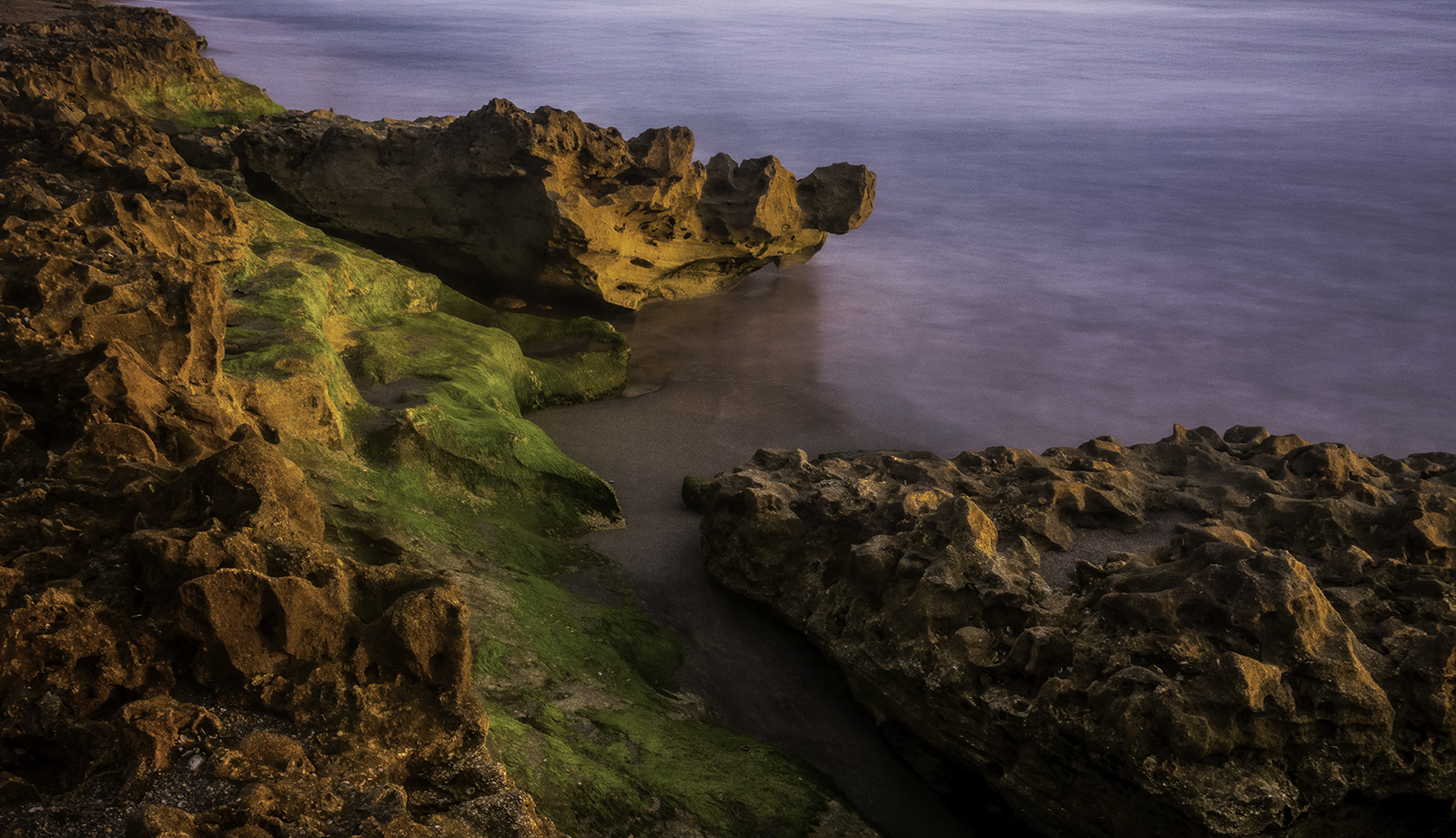Larry Treadwell
About the Image(s)
BLOWING ROCKS STATE PARK
Main Image: Nikon D850, 24-70mm lens. ISO 800, f11, 1/640, handheld
Second Image: Nikon D850, 24-70mm lens. ISO 250, f13, 25 seconds. Tripod with cable release
Here I go, I’m trying to create a nature story using a landscape image. PSA says it is possible, but quite rare. The beach at Blowing Rocks State Park in Jupiter, south Florida is not your typical Florida sandy beach with palm trees. After years of erosion caused by the ocean’s waves what remains is a rugged shoreline made of Anastasia Limestone. This soft, sedimentary rock is steadily being eaten away as constant waves pound and wash against the exposed rock. Over time the sea can carve holes into the rock and actually creates tunnels extending from the sea inland. Sometimes the pounding of the water not only creates tunnels but can create a vertical chimney. When a chimney is created a strong wave created by high tide or storm surge (storm surge is best) can force water through the tunnel and up the chimney where it explodes in a rising column of water. My image this month tells the story of this water action. This image was taken just after dawn at high tide and was handheld as it is impossible to tell exactly where the fountain of water will appear and I had to adjust at each eruption to get the shot. That’s my story and I’m sticking to it.
The Second Image: I thought you needed to see how dull and ordinary this Anastasia Limestone actually is in order to appreciate the second image (this is the one I went to the park to photograph). If you are at the state park on a morning in the fall when the sun is rising a bit more form the south east than true east ??“starting date is September 22 (the Fall Equinox) and the sky has some cloud cover that is a bit pink or orange you mayl be treated to a magical transforming of the dull beige, grey stone into a golden glow. For just a few magical moments, as the sun rises, the rocks blaze with golden hues while the algae and seaweed that grow on the stone and are kept moist by the sea glows with an emerald green. On the rare occasions when I have been fortunate enough to experience this transformance I have wondered if the Spanish explorers who arrived on these shores in the early 1500s might have seen this and thus given the coast it common name, “The Gold Coast”. Seeing how ordinary the limestone looks during full daylight one would never guess the beauty that lies waiting for the lucky few. Now is this good enough for a nature story. Without the backstory I doubt anyone would ever know.
4 comments posted
One thing I think is that the overwhelming power of the ocean, and that this power drives the plume is necessary to complete the story. In your photo, the ocean looks level and calm, so the relationship between its power and water the plume is weak. Perhaps braving storm conditions would provide the roiling ocean and overwashing waves needed to drive the relationship home?
Technically, the image is sharp but a little dark and flat for my taste. I tried lifting the exposure, blacks, and shadows, but concluded that the dark areas in the rock may be too underexposed to recover (of course, the raw file might have more information). Increasing contrast helped a little, but bumping yellow (+50) and orange (+30) luminosity brightened the sand, which in turn brightening the image. Cropping the bottom more, centering the plume vertically and reducing the amount of rock and sand, brought more emphasis to the plume. Finally, it looks like JPEG compression pixelated and discolored the sky, probably to compensate for the complexity of the rock.
Posted: 10/05/2025 00:27:02
I've wanted to photograph those blow holes with violent seas behind them but---my personality gets in the way. I've thought of going up there when a hurricane is coming in or at least the surf. First that rock is razor sharp, it slices my shoes to pieces In bad weather the rocks are really slippery and climbing on them is not for the faint at heart.
Short water plumes, like the one shown, can happen with very little water action (like what you see here).
Still, I would like the big waves and surf in the photo, so with your encouragement, I'll try to muster up some courage and when a storm comes in---I'll "brave" the rocks to get a shot. Posted: 10/05/2025 21:34:56 Posted: 10/05/2025 21:35:47
For the record, most of my shots are for my pleasure and I do not care how they fare in competition. Posted: 10/08/2025 17:06:49


